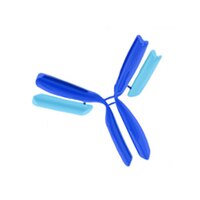OP119 Sigma-AldrichAnti-c-ErbB3 (Ab-4) Mouse mAb (H3.90.6 or Ab90)
Anti-c-ErbB3 (Ab-4), mouse monoclonal, clone H3.90.6 or Ab90, recognizes the ~185 kDa c-ErbB3/HER3 protein in T47D cells and breast carcinoma. It is validated for FC, IF, and IP.
More>> Anti-c-ErbB3 (Ab-4), mouse monoclonal, clone H3.90.6 or Ab90, recognizes the ~185 kDa c-ErbB3/HER3 protein in T47D cells and breast carcinoma. It is validated for FC, IF, and IP. Less<<Synonyms: Anti-Erythroblastosis Virus, Anti-HER3, Anti-ErbB3
Recommended Products
Overview
| Replacement Information |
|---|
Key Spec Table
| Species Reactivity | Host | Antibody Type |
|---|---|---|
| H | M | Monoclonal Antibody |
Pricing & Availability
| Catalogue Number | Availability | Packaging | Qty/Pack | Price | Quantity | |
|---|---|---|---|---|---|---|
| OP119-100UG |
|
Plastic ampoule | 100 μg |
|
— |
| Product Information | |
|---|---|
| Form | Liquid |
| Formulation | In 10 mM PBS, pH 7.4. |
| Positive control | T-47D cells or breast or prostate carcinoma tissue |
| Preservative | None |
| Quality Level | MQ100 |
| Physicochemical Information |
|---|
| Dimensions |
|---|
| Materials Information |
|---|
| Toxicological Information |
|---|
| Safety Information according to GHS |
|---|
| Safety Information |
|---|
| Product Usage Statements |
|---|
| Packaging Information |
|---|
| Transport Information |
|---|
| Supplemental Information |
|---|
| Specifications |
|---|
| Global Trade Item Number | |
|---|---|
| Catalogue Number | GTIN |
| OP119-100UG | 04055977224962 |
Documentation
Anti-c-ErbB3 (Ab-4) Mouse mAb (H3.90.6 or Ab90) Certificates of Analysis
| Title | Lot Number |
|---|---|
| OP119 |
References
| Reference overview |
|---|
| Chen, X., et al. 1996. J. Biol. Chem. 271, 7620. Carraway, K.L., III, et al. 1994. J. Biol. Chem. 269, 14303. Ciardiello, F., et al. 1991. Proc. Natl. Acad. Sci. USA 88, 7792. Plowman, G.D., et al. 1990. Proc. Natl. Acad. Sci. USA 87, 4905. Kraus, J.H., et al. 1989. Proc. Natl. Acad. Sci. USA 86, 9193. Shoyab, M., et al. 1989. Science 243, 1074. Kawakami, T., et al. 1986. Mol. Cell. Biol. 6, 4195. |







